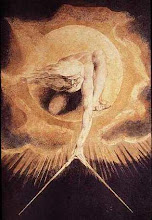
Watchmen didn't need a movie. The longer this trend of film adaptations of graphic novels run, the more I'm convinced that film execs think that there's something wrong or missing with graphic novels. I get the feeling that when they see a comic book, they just treat it like a storyboard for their potential movie, which is a huge disservice to the medium. Comic books are what they are; they aren't missing anything, they aren't some sort of transitional step between movies and books, and they certainly don't require any motion or voices to make them "come alive". Have some confidence in the art form for Christ's sake. With all this considered, I thought that Watchmen was a good movie.
"Visionary" director Zach Snyder inherited this "unfilmable" project and did a pretty good job with it, I thought. The film is beautiful to watch, the special effects dazzle in every frame of Dr. Manhattan, the most celebrated of the novel's characters. Jackie Earle Haley's performance of Rorschach is another high point, and this was an area of particular sensitivity for me, as he was my favorite character in the novel. His gutteral voiceover throughout was precisely like I imagined, as with his sociopathic intensity. Rorschack is a figure who acts like a hero, but thinks like a villain, and the film portrayed this very well. The rest of the cast is a mixed bag, but Jeffery Dean Morgan as the Comedian was another strength. Billy Crudup's portrayal of Dr. Manhattan is one of the most intriguing perfomances I've seen in a long time. At first I thought it was poor acting, and it may be, but Dr. Manhattan is a god-like being who growing increasingly distant from the rest of the world. Being a god can be lonely, and I think Crudup hits the mark, intentionally or not. Probably my favorite part of the movie is the opening sequence where a montage of events about the Watchmen's past are revealed to Bob Dylan's "The Times Are A-Changin'." This sequence holds a number of rewards beyond the graphic novel. Here, it's obvious that Snyder was having a lot of fun with the Watchmen mythology. A few rewarding examples are bits like Kenedy's assassination with the Comedian hiding in the grassy knoll, or Andy Warhol selling a portrait of Nite Owl.
This movie looked great on a lot of fronts, but elicited unintentional laughter from the audience during certain parts. For instance Dr. Manhattan's penis. I understand that it's textually accurate to include it, but that doesn't make it a good idea. Then there's the sex scene with Nite Owl and Silk Spectre with Leonard Cohen's "Hallelujah" playing over their coital encounter. The musical choice made the whole scene so ridiculous and bizarre, and I felt weird for seeing that. Who watches the watchmen? Because whoever they are, they're some sick bastards.
While I'm thinking about the soundtrack, I would say that it's the worst aspect of the movie. It gives Watchmen a feel of listening to some CD-R a high-schooler made rather than impending apocolyptic doom. I didn't really have "Hallelujah" in mind when Nite Owl and Silk Spectre were going at it, or Jimi's "All Along the Watchtower" as Nite Owl and Rorschach were storming Ozymandias' Antarctic hidout.
What is the most unfortunate thing about the movie, though not the worst part, is how Snyder's direction works so slavishly close to the original book, that the movie doesn't really have an identity of its own. I feel like this will never be considered as Watchmen, but as Watchmen: The Mov- (omg have you read it? ...talk about amazing!!!11)ie. I won't cite specific examples out of fear of spoiling.
All things considered, though, the movie was about as good as it could have been, realistically speaking.
Michael Bay was actually considered for directing this film in 2003. ugh. (I liked transformers though; it was a really good looking for a terrible movie). You can see his impressively underwhelming 8% moviemeter on rottentomatoes. Man, the stock of Michael Bay & Co. and the Sam Hamm Corp. isn't doing too well.
Not only that, but the following Actors were at one point considered to play Rorschach: Robin Williams, Doug Hutchison, Simon Pegg, and Daniel Craig. Oh yeah, they also tried to cast Ron Perlman as the Comedian and Kevin Costner for Nite Owl. Ugh.
So really, I was happy with this movie. It won't blow minds and cream pants like the book did, but I thought it was a really pleasant adaptation. Plus Solid Snake wrote the screenplay. How cool is that? Since the movie is damned by the writer of its source material, I feel like I'm eating a forbidden fruit of sorts, but it is pretty damn tasty.
Oh, and for a good laugh...
Next Topic: Terrible Band names: This Shit Needs to Stop.


